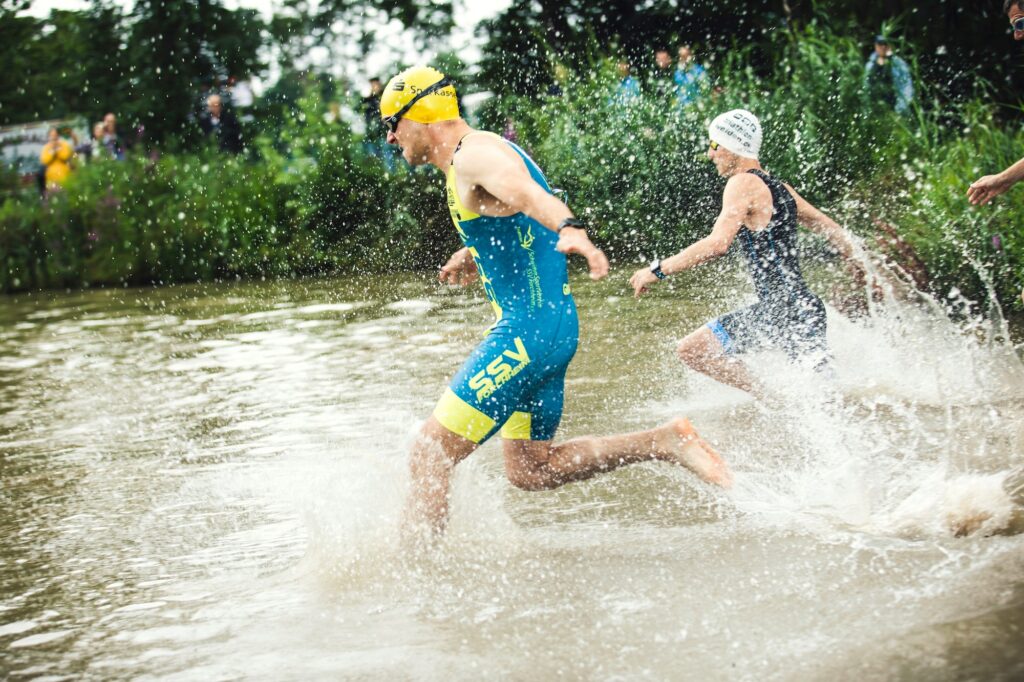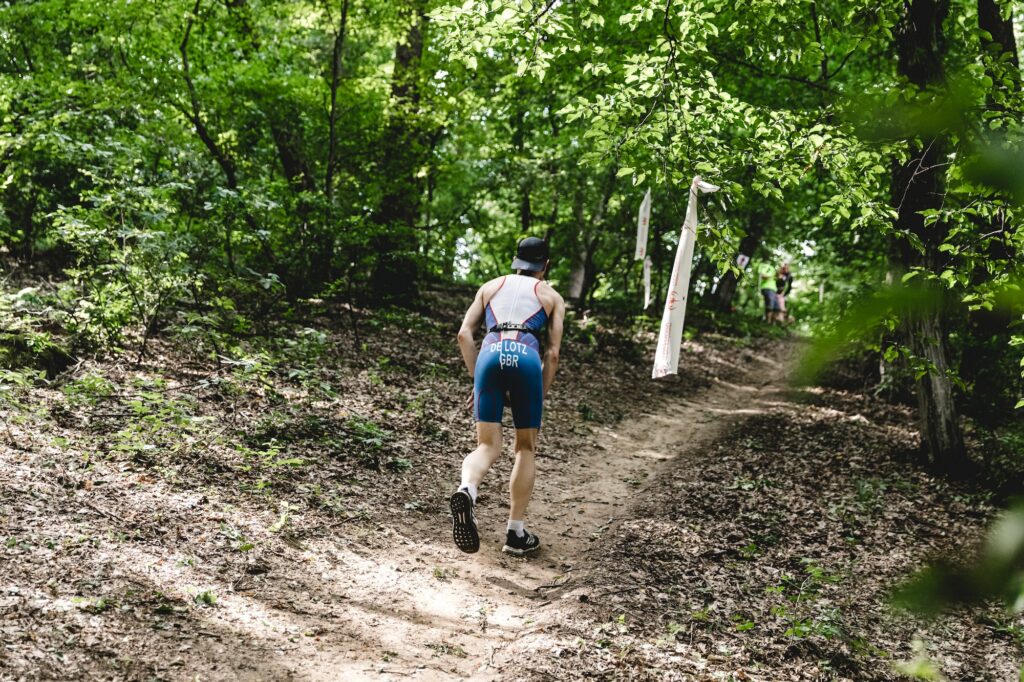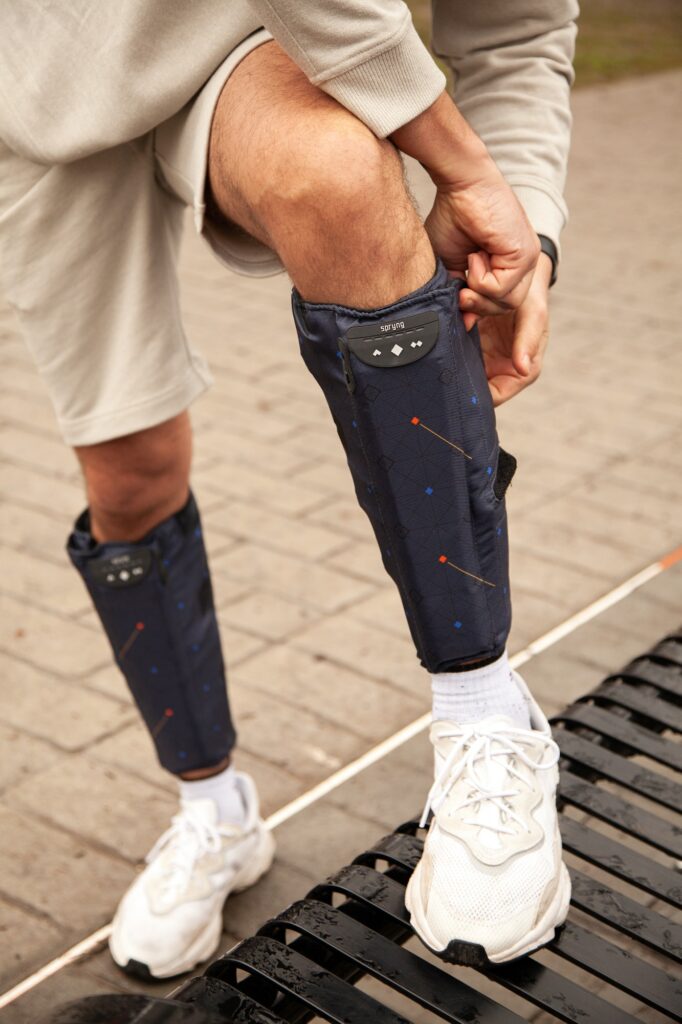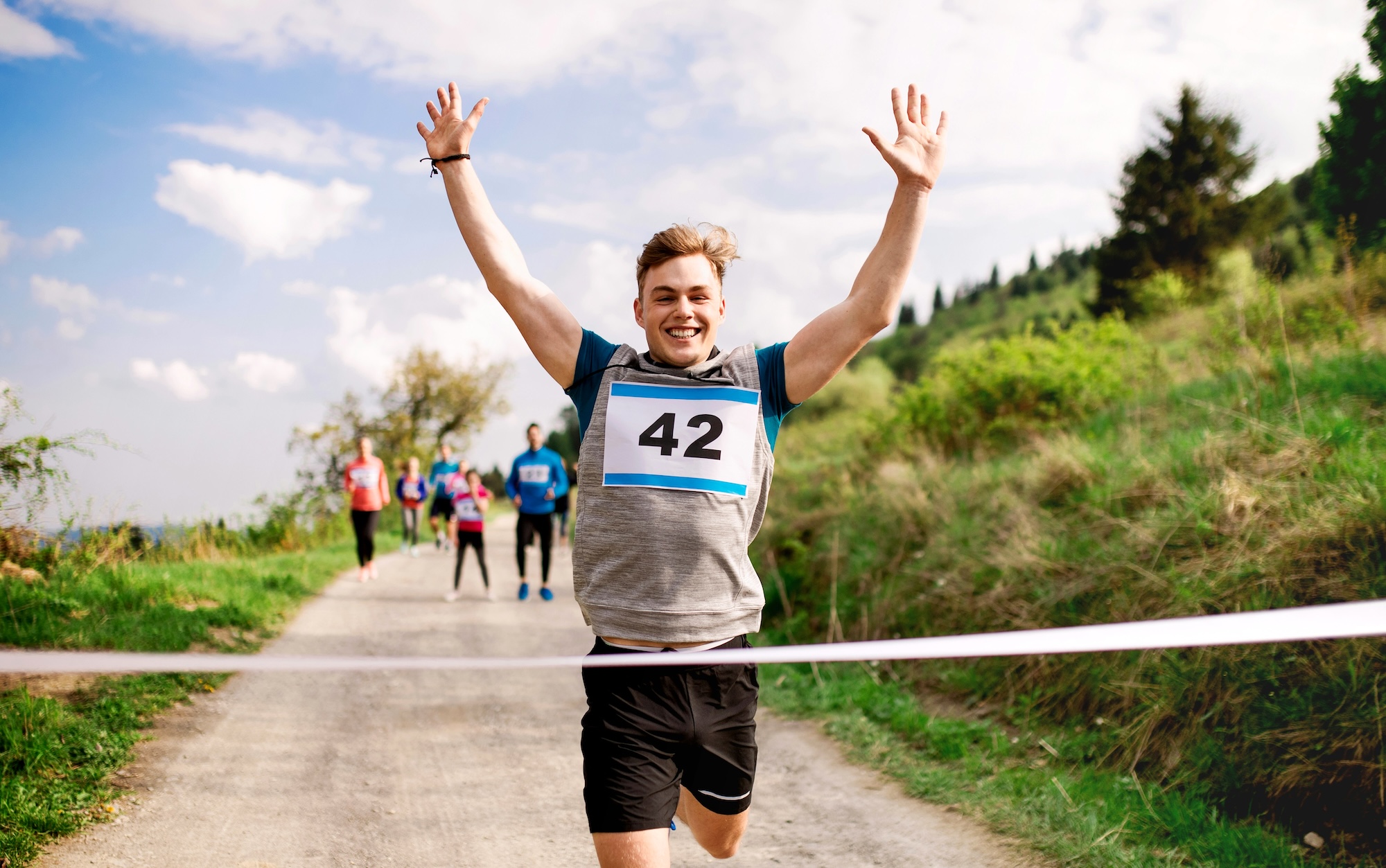Focus on these these key training elements to up the ante on your next Olympic distance triathlon
Photos by Louis Tricot, Markus Spiske, Ashley de Lotz, and Michael DeMoya/Unsplash
Despite the hype that surrounds long-course racing, not everyone is ready to be an Ironman. If racing more than 51.5 kilometers is not your cup of tea but you have big goals for your upcoming short-course racing season, here are 10 tips to help you break your personal best and maybe even finish high up in your age group.
1. Don’t be a weekend warrior
Regardless of the distance of the endurance event you are training for, consistency is key. Although you can get away with less training time when training for a short-course or Olympic distance triathlon, cramming high-volume training during the weekend or over a short period leading up to race day is a recipe for disaster.
The goal is to establish the healthy, progressive training load your body needs to adapt positively and get stronger. You’d be better off with daily one- or two-a-day short workouts anywhere between 30 to 75 minutes during the week, depending on your time constraints, and then save your longer workouts for the weekend.
Although you can get away with less time when training for a short-course or Olympic distance triathlon, cramming high-volume training during the weekend or over a short period leading up to race day is a recipe for disaster
What you want to avoid is the detraining that occurs between training sessions if they are too far apart and overloading the body such that it is unable to bounce back with short-term recovery.
2. Do focus on form
Due to the repetitive nature of endurance sports, efficiency of movement is another key element regardless of distance. In the case of short-course or Olympic distance racing in which you can afford to race with more power over a shorter distance, finding ways to increase power while minimizing energy expenditure might give you the edge you need to take your performance to the next level.
While you may already be spending many hours perfecting your swim technique in the pool, you should consider working on the economy of your pedal stroke and running form as well, and even consider tweaking your cycling position. You might just be surprised by the dramatic improvements you can make just by focusing on these seemingly minute details during training. These slight modifications could help you run better off the bike or add more spring to your step without the extra effort.

3. Don’t train like an Ironman
Training for a short-course or Olympic distance race is not the time to go on long runs and six-hour bike rides. Although it’s strongly advised that you work on establishing a strong endurance base at least six to eight weeks before you begin race-specific training, regular 2,000- to 3,000-meter swims, two- to three-hour base rides, and one- to 1.5-hour base runs are all you need to make sure your body is ready for more high-end workouts.
You still want to have an effective combination of volume and intensity during the weeks leading up to the race but at the end of the day, intensity is a better predictor of performance, not volume of training.
4. Do schedule regular testing
If your goal is to reach your maximum athletic potential, testing is one of those necessary evils that can help you gauge your performance improvements before race day. It’s the only objective basis for resetting training zones and making adjustments to address deficiencies that may be holding you back.
More frequent testing is advised for your weaker disciplines to make sure you are making progress. Note that although there are many established field test protocols available, what’s more important is that you choose one for each discipline that is both practical and repeatable for you.
Know what you are up against and simulate race-specific conditions during training to achieve the appropriate adaptations needed to optimize your performance
5. Do train for the specific demands of your race
Do your homework and study the race course then find the appropriate training venue where you can simulate the terrain and practice your race pace as you get closer to race day. For a race with an open-water swim, you can include sighting and drafting drills in the pool or schedule open-water swim sessions before the race.
If your race is known for its hilly bike course, it would be worthwhile to include some hill repeats and/or work on your descending skills. If there are some off-road portions on the run course, you may want to add some trail running into your weekly runs. Know what you are up against and simulate race-specific conditions during training to achieve the appropriate training adaptations needed to optimize your performance on race day.
6. Do brick workouts in your training plan
The physiological demands of biking after swimming and running after biking are different from doing each of these disciplines on their own. Getting your body used to effectively and efficiently prepare itself from one leg to the next is crucial if you want to get ahead of the competition. And brick workouts don’t just mean running off the bike.
There’s still some running involved from the swim course to the transition area before you actually start riding. Pool drills like deck-ups and running in place or around the pool in between intervals are also effective ways to train your body to get used to the aerobic, anaerobic, and muscular demands that are unique to triathlon, especially in short-course and Olympic distance races where you need to reach a higher race pace with less time to spare.

7. Don’t underestimate time saved in transitions
Every second counts, especially for short-course triathletes looking to set a new PR or be the fastest in their age group. And the best part is that it’s free, as long as you are able to perfect your transition strategy. Fast transition times can give you the gap you need to get ahead of someone who’s been drafting on you during the entire swim leg or put you ahead of that fast biker you’ve desperately been trying to pass. Include T1 and T2 practice as you get closer to race day and keep working on it until it becomes second nature that you don’t even have to think about it.
Include T1 and T2 practice as you get closer to race day and keep working on it until it becomes second nature that you don’t even have to think about it
8. Do prioritize recovery
The healing power of sleep and proper nutrition cannot be stressed enough for competitive athletes. This is how full-time professional athletes are able to push themselves to the limit. They are paid to train, eat, sleep, and repeat. Of course, typical age groupers have a life outside the sport and have to juggle other commitments. You may not have the luxury of taking naps during the day but getting enough sleep, at least seven to eight hours a day, is non-negotiable if you want to train and race at your best. So is filling up your tank with nutrient-dense food. After all, you wouldn’t put cheap fuel in a Ferrari, right?

9. Do make a race plan
Mapping out your race-day strategy from the moment you wake up until you cross the finish line is an important step in making your goal a reality. Everything from your nutrition, hydration, equipment, transition, pre-race routine, and pacing should be practiced so you have time to make changes if necessary. You may not be able to control everything that happens on race day but having a plan and sticking to it as best as you can allows you to focus on what you can control and stay in the present.
10. Don’t underestimate the power of the mind
I’m pretty sure you’ve seen enough motivational videos of inspiring athletes to appreciate this point. Even when everything seems to be falling apart, if the mind is strong and it tells the body that it can, then it will. Pushing yourself to your absolute limit will hurt but if you can train your mind to be as tough or even tougher than your body, then it’s possible to transcend those physical limits. If you can manage to do that, you have yourself a winner.
Have some training questions, feedback, or suggestions for future articles? Please feel free to drop me a note on the comments section below or on any of our social media platforms. You can also email me directly at [email protected].













































